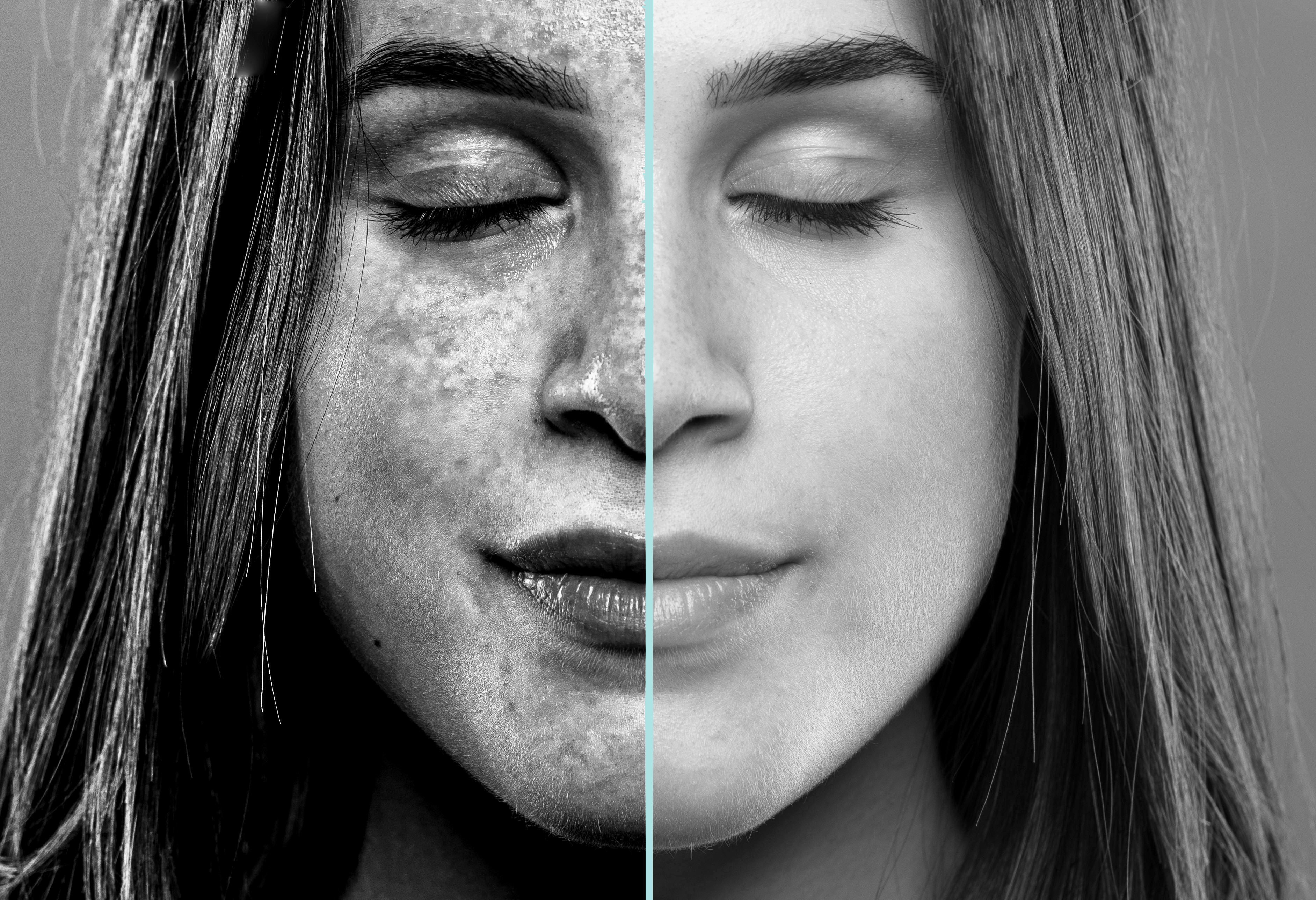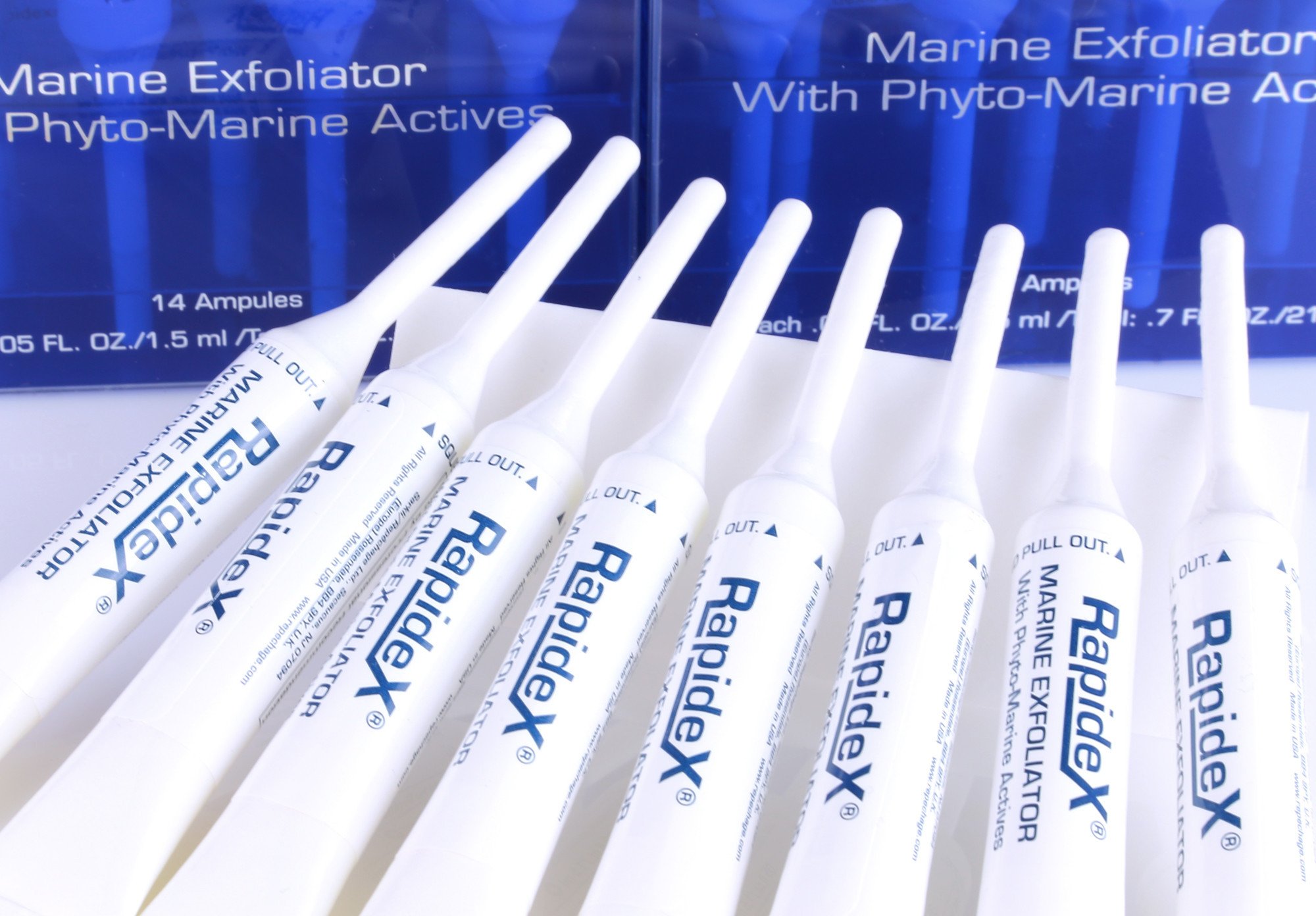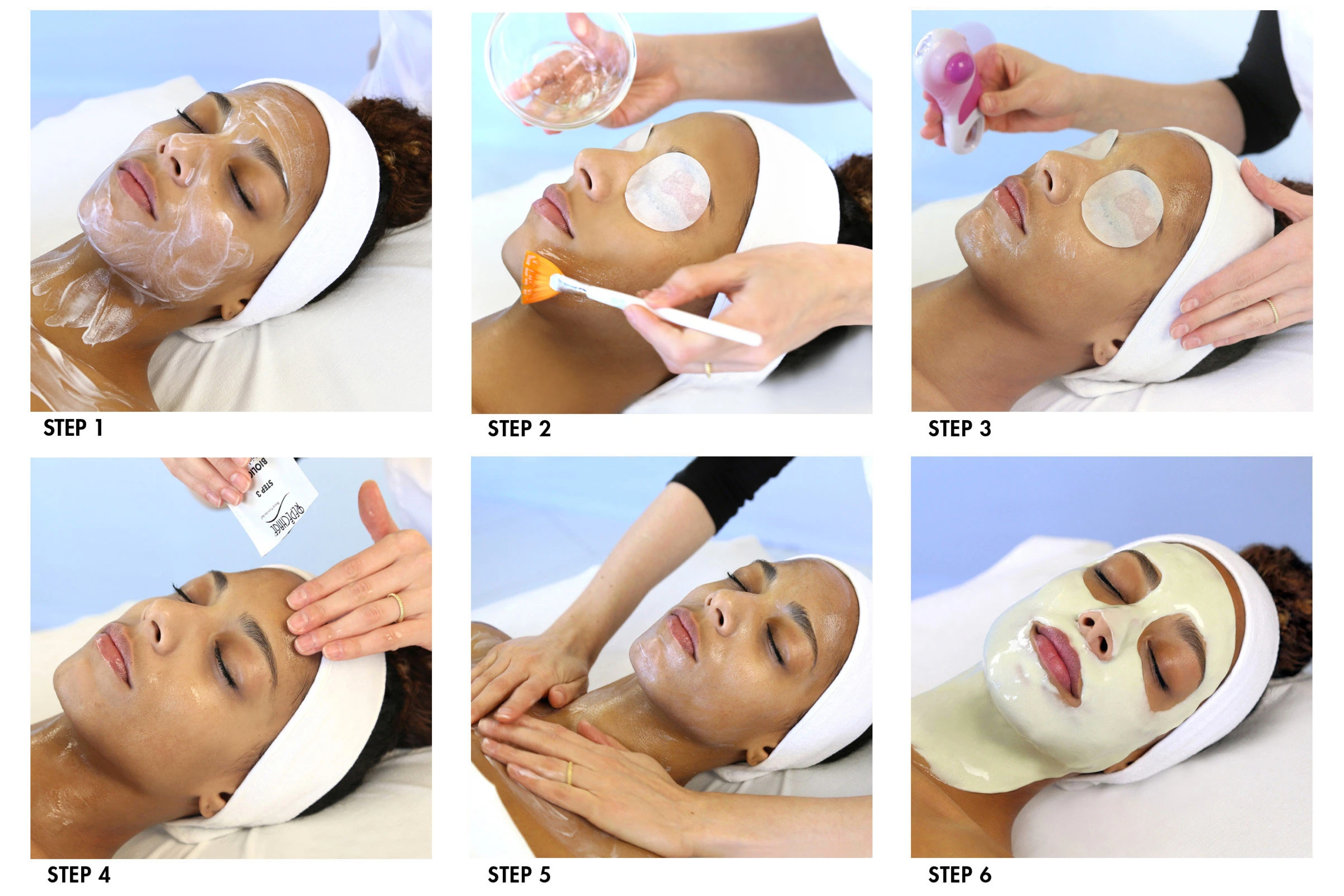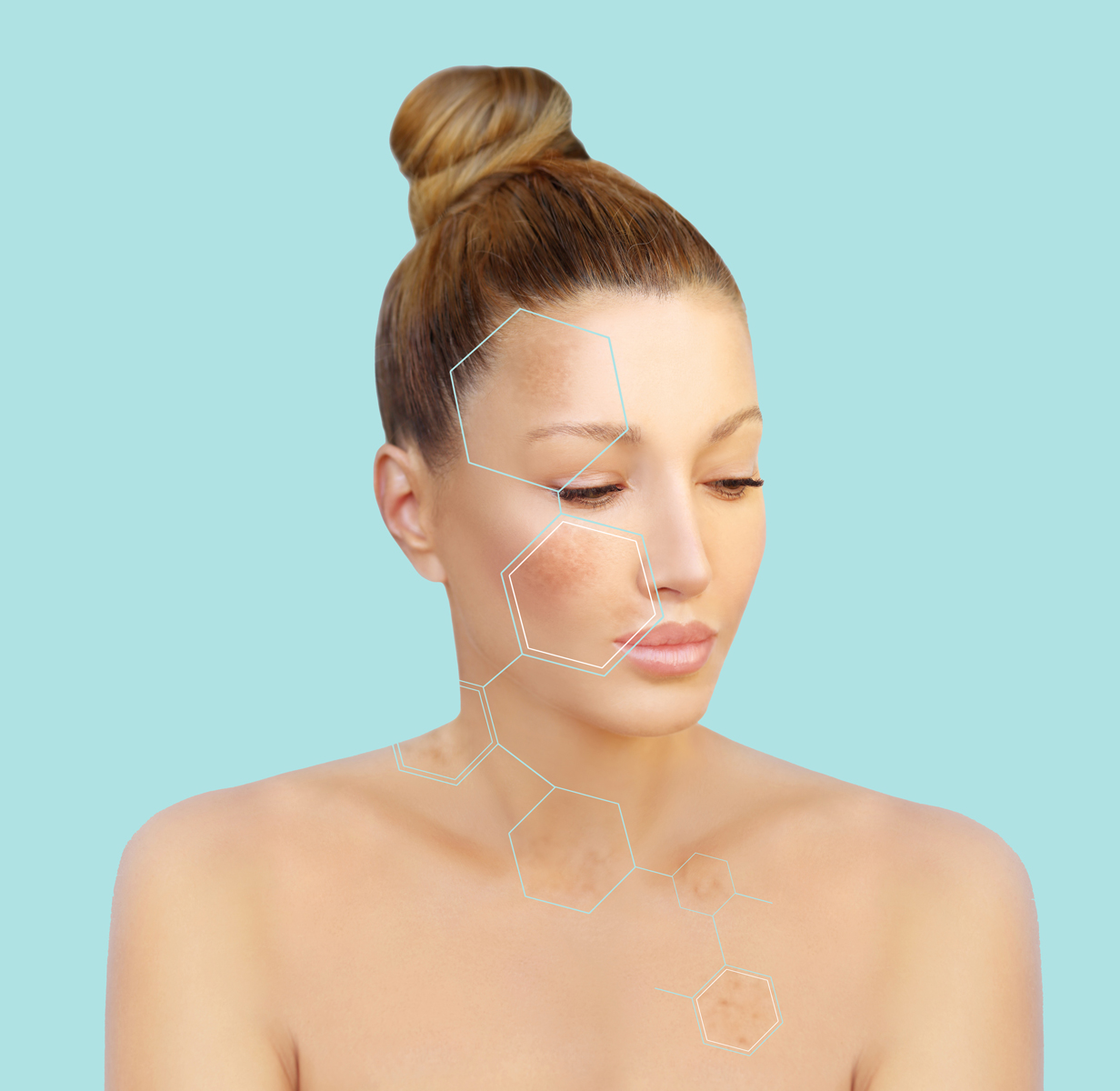Treatment of hyperpigmentation disorders is big business. The treatment market for this skin condition is currently expected to reach USD 10.22 billion by the year 2026.

There are many forms of hyperpigmentation as well as the methods to treat them. Sun or age spots, caused by UV light, are probably the most common form of hyperpigmentation, but there are other prevalent forms of which estheticians need to be familiar. For example, post inflammatory hyperpigmentation (PIH) and melasma are two common forms of hyperpigmentation. These have distinct differences in appearance and are triggered by different phenomenon. Despite their differences in origin, these conditions can be addressed by the esthetician in similar ways. And, while estheticians cannot diagnose or treat skin diseases, because both of these forms of hyperpigmentation are evident on the face, they can be a major reason for a client to seek out professional help. One study found that 65% of patients reported discomfort due to the spots, 55% felt frustration and 57% were embarrassed about the aspect of their skin.
As estheticians and skin care experts, it is important to be able to recognize and differentiate between these conditions. There are many ways to lessen the appearance of these conditions. Here, we’ll review the causes and physical manifestations of these conditions, as well as provide an overview of the latest ingredients estheticians can implement in their skin care treatments and products to help lessen the appearance.
Melasma
Melasma is a form of hyperpigmentation that is characterized by patches of brown pigmentation on the cheeks, jawline, forehead, and upper lip. Sometimes referred to as “the mask of pregnancy,” sun exposure can exacerbate the hyperpigmentation. Rather than being associated with “age spots,” melasma affects a much younger demographic. In one study, about 60% developed melasma before thirty.
The exact causes of melasma are unknown, although some triggering factors include sun exposure, pregnancy, use of oral contraceptives and other steroids, eating certain food items, ovarian tumors, hormone replacement therapy, photosensitizing skin care treatments that trigger inflammatory processes of the skin, and even stressful events.
It is known that melasma occurs in all ethnic and population groups. However, epidemiological studies have reported higher prevalence among Fitzpatrick skin types III-V. Sun exposure was reported as a triggering factor by 51% of women and as an aggravating factor by 84%. Pregnancy was reported as an aggravating factor by 51% of women who had been pregnant, and oral contraceptive use reported by 38% of women exposed to oral contraceptives. The risk of severe melasma was about three times higher for women with age at onset under 30, phototype V and major lifetime sun exposure and about 8 times higher for women exposed to oral contraceptives.
Because melasma is exacerbated by exposure to UV light, it can appear on any sun-exposed area of the body, but is most commonly found on the face. Facial melasma lesions are categorized into two types: centrofacial and peripheral. In the centrofacial type, lesions are predominant in the center of the face, i.e., in the glabellar, frontal, nasal, zygomatic, upper lip and chin areas. In the peripheral type, the fronto-temporal, pre-auricular and mandibular areas are affected.

Post Inflammatory Hyperpigmentation:
Whereas melasma is a result of hormonal triggers, post-inflammatory hyperpigmentation (PIH) is a condition in which an injury or inflammation to the skin causes increased pigment production. Darkened pigmentation is often deep red, purple or brown in appearance. PIH is more prevalent in darker-skinned individuals (Fitzpatrick skin types IV through VI) and, like melasma, can be difficult to treat when it involves a deeper skin layer. The most common cause of PIH is acne, but it also can result from psoriasis, a burn, or an injury.
PIH results from the over or irregular production of melanin after skin inflammation. When PIH occurs in the epidermal layer, there is an increase in the production and transfer of melanin to surrounding keratinocytes. Although the exact mechanism is unknown, this rise is stimulated by cytokines and other inflammatory mediators as well as reactive oxygen species (ROS), or free radicals, which are released during the inflammatory process.
The location of the inflammation within the skin determines the color of the hyperpigmentation. When PIH occurs within the dermis, this results in inflammation-that induces damage to keratinocytes in the basal layer. The melanin released from this incident will result in hyperpigmentation that are blue-gray in appearance. Inflammation in the epidermis will result in hyperpigmentation that are tan, brown or dark brown. Like melasma, PIH can worsen when exposed to UV light.
INGREDIENTS TO LOOK FOR:
There are ingredients that help to diminish the appearance of dark spots for all skin types. Look for skin care treatments that include these important botanicals. Please note: Consistent use of sunscreen is essential when using ingredients that help to lessen dark spots.
Laminaria Digitata & Ascophyllum Nodosum Extracts: Laminaria Digitata and Ascophyllum Nosodum seaweed extracts are rich phyto-nutrients in their most potent form. Each of these seaweeds contains 12 vitamins, 42 minerals and trace elements, and 18 amino acids, as well as natural antioxidants.
Glycyrrhiza Glabra (Licorice) Root Extract: Licorice root contains glabridin and liquiritin that can help reduce the appearance of pigmentation.
Kojic Acid: Kojic acid is derived from mushroom-like fungi during fermentation, and is the second most common natural lightening agent.
Alpha Arbutin: Arbutin is a natural form of hydroquinone derived from the bearberry plant. Alpha Arbutin is a new active ingredient in powder form known to help brighten the appearance of uneven skin.
Papaya/Papain: Papain, the proteolytic enzyme derived from the latex of the green papaya fruit works naturally to digest the surface protein of the skin and gently removes uneven old squames to create a color and texture that’s much closer to younger skin. In addition, the use of proteolytic enzymes provides a gentle exfoliation process, making this an option for even sensitive, fragile skin.
Niacinamide: Niacinamide, or Vitamin B3, is beneficial to the skin in many ways, including as a moisturizer and antioxidant. It can also help lessen the appearance of age spots, and is very tolerable by many skin types.
Oxidized Glutathione: A molecule found naturally within the skin that is known to play an important role in preventing oxidative damage. This ingredient has been found to help lessen the appearance of uneven skin tone.
Diglucosyl Gallic Acid (DGA): More potent than Vitamin C and Kojic Acid, this ingredient is known to help restore a perfect-looking complexion while it helps even the appearance of the skin tone.
Vitamin C: Sodium Ascorbyl Phosphate (Vitamin C) is a stabilized form of Vitamin C known to help brighten skin’s appearance.
Willow Bark Extract: Salix Alba (Willow) Bark Extract is extracted from the white willow tree (Salix Alba) and helps with mild exfoliation of dead skin cells to reveal a more youthful complexion. This extract is a natural form of salicylic acid, a Beta Hydroxy Acid (BHA) known to help shed dead skin cells gently from the skin.
Lactic Acid: Lactic Acid is a form of Alpha Hydroxy Acid (AHA) that is considered mild enough for sensitive skin types.
Centella Asiatica (Gotu Kola) Extract: A plant from Asia known to help reduce the appearance of visible signs of aging.
Treatments for Hyperpigmentation in Spa and Salon
Glycolic Acid Peels
Glycolic acid is an AHA (Alpha Hydroxy Acid) that occurs naturally in the sugar cane. Glycolic Acid works by exfoliating the surface layers of the skin, revealing a brighter looking complexion. Glycolic acids can be safe and effective when they are used in a seaweed base.

Rapidex® Marine Exfoliator with Phyto-Marine Actives is a mild glycolic peel that can be used alone or added to many facial treatments. This is a safe and effective uni–dose program based on phyto-marine extracts and natural fruit acids that will gently exfoliate the skin, helping the skin to appear more even in tone and texture, feel softer and smoother. Lydia Sarfati created Rapidex® Marine Exfoliator to provide a controlled application process because she observed that clients were over-exfoliating their skin, whether with microdermabrasion, chemical and acid peels or laser resurfacing procedures. Rapidex®, an international skin care sensation, is the first of its kind. Its unique uni–dose packaging stays fresh, provides a large, pre-saturated cotton swab soaked in our exclusive formula.
A more intensive form of Glycolic peel is found in the Repêchage® Biolight® Miracle Facial with Glyco-Sea® Glycolic Peel. This treatment combines a mild glycolic peel with innovative marine biotechnology to help brighten and reduce the appearance of hyperpigmentation in the skin. Perform the Repêchage Biolight® Miracle with Glyco-Sea® Glycolic Peel Facial monthly or as needed. The kit contains everything needed in convenient and sanitary uni-dose applications for maximum effectiveness.

Mild Peels – Proteolytic Enzymes
Enzymatic exfoliation can be used on more sensitive skin types. Look for a proteolytic enzyme peel based on papain, the proteolytic enzyme derived from the latex of the green papaya fruit. This exfoliant gently removes uneven dead skin cells, revealing brighter, younger-looking skin and can be found in the Repêchage Vita Cura® Enzymatic Micropeel.
Hybrid Peels
The newest formulation of peels are an entirely new concept—a hybrid peel that combines buffering natural ingredients in an easy-to-apply form, such as a clay-based mask with AHAs to gently help reduce the appearance of dull and uneven complexion with visible spots and fine lines and wrinkles. This can be found in the Repêchage® Biolight® Luminex Mask. This new hybrid peel can help create a peeling effect without potential irritation.
Express Brightening Facial
Clients can opt for a brightening express facial utilizing a sheet mask with brightening ingredients to address overall dull, uneven skin in lieu of a facial peel. The Repêchage® Biolight® Express Brightening Facial uses the Biolight® Brightening Sheet Mask combined with Biolight® products to help create a luminous, flawless-looking complexion anytime. This express 30 minute treatment combines the latest in sheet mask biotechnology using ingredients such as Arbutin, Diglucosyl Gallic Acid, and Oxidized Glutathione combined with our exclusive Seaweed extracts to help sallow, dull skin with accumulated dead skin cells look rejuvenated, glowing and restored while helping to control the appearance of uneven tone.
For at home, be sure to recommend products that help to maintain a brighter, more even-toned complexion such as the Biolight® Collection for Dull, Uneven Skin and daily use of an environmental protection cream such as the Mineral Face Shield® or a broad-spectrum sunscreen with an SPF 30 or greater to prevent further darkening of the skin.
Hyperpigmentation can come in many forms, and have vastly different causes. Understanding the differences is one of the hallmarks of a highly trained esthetician. It is important to continue studying different forms of skin concerns as well as the latest treatments and ingredients in order to continue to grow as a skin care expert, and to grow your business.
Have any questions about professional brightening treatments? Leave them in the comments below.
